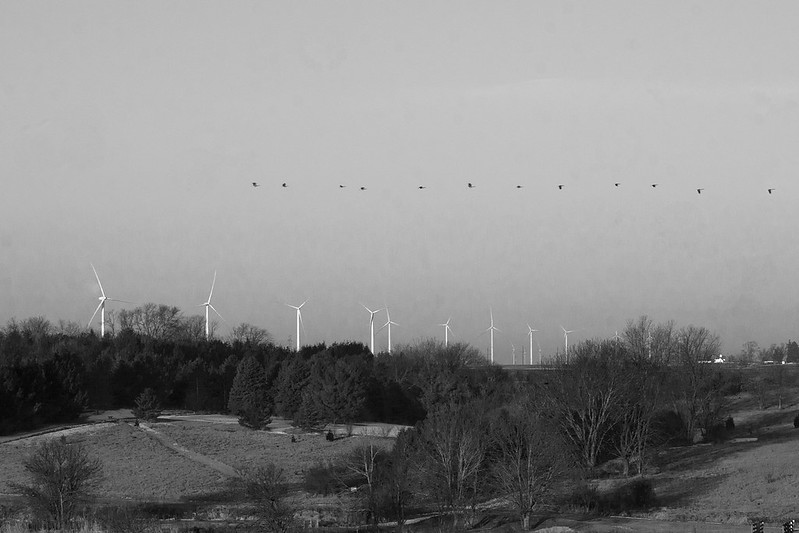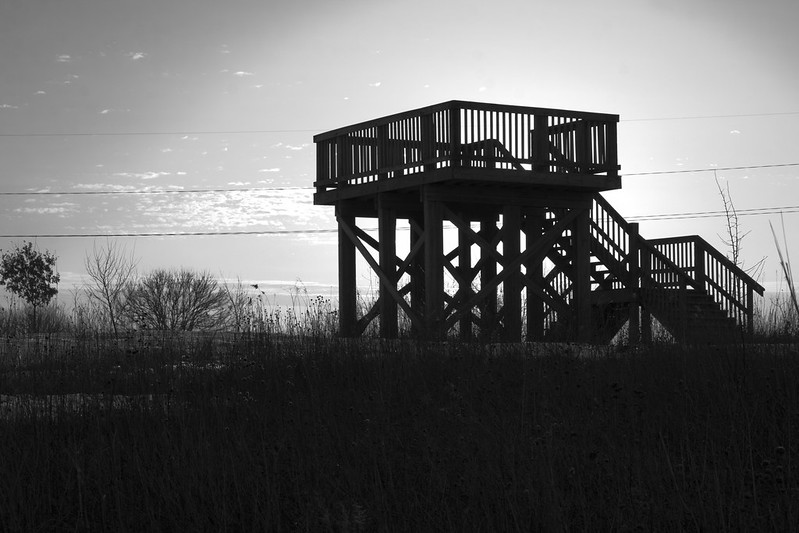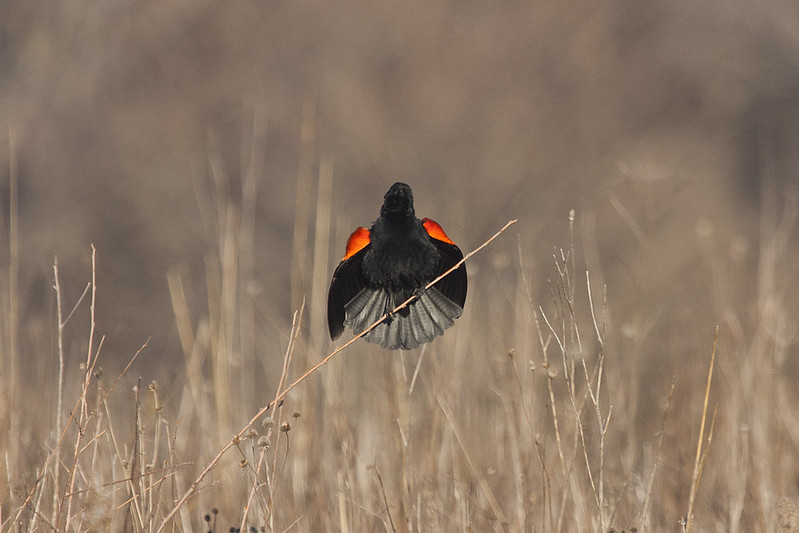 |
| Small and silent...they are birds of the shadow. |
I first saw this bird in February around Patagonia Lake in southeast AZ and thought it was a Gray Flycatcher. Gray's and Dusky Flycatcher's look very similar and frequent similar haunts. Grays have a slightly longer tail and the adults are a bit paler. I think I'll stick to Gray for this bird, but some nagging feeling says this could turn into a Dusky at any moment...or even something much, much more embarrassing.
Another important clue in differentiating Gray Flycatchers from Dusky is mandible length. Provided one gets a nice profile view of the bird, which is thankfully easy with these vain little birds, the Gray Flycatcher's beak is much longer relative to its head. This bird, seen on the De Anza trail in southeast Arizona, was being a real stick in the mud, identification wise, until it flew lower and gave a profile picture.
Notice too how the apparent yellow hues on this bird in the first picture are much more drab on the more dully-lit second. Overcast skies...they help to out an Gray Flycatcher too.
Slightly smaller than the Gray Flycatcher, which also seems to be the most common of these first three, the Dusky Flycatcher also has a short, dark bill and prefers lower, thicker brush to set up its insect ambuscades.
I've been told though that all those bets are off in migration, and while my first inclination was to call the following bird a Dusky, the long primaries and stubby bill have experts saying Hammond's. One way or the other, the empids win this round...
Going just by general color and demeanor, a Hammond's can turn into a Dusky or Gray Flycatcher too, but luckily they tend to prefer more coniferous perches and have noticeable longer primary projections on their wings, meaning their primary feathers protrude noticeably farther downward from their secondaries.
With other empids, the wings extend to the base of the tail, but the Hammond's has a longer reach relative to its body. Compared to the Gray Flycatcher, it also has a stumpy beak and a more pronounced vest.
Here in Phoenix, the Pacific-Slope vs. Cordilleran war rages at the Desert Botanical Gardens every summer. Both birds can pass through the area during migration, and they're physically indistinguishable if they keep quiet, which of course they do. How many Gulls or Sparrows or Shorebirds are there that are literally indiscernible from each other unless you hear them call (Probably lots more than I am aware of huh...)?
I see these Flycatchers with every later spring and summer visit to the Desert Botanical Gardens. Because the Cordillerans typically stay in the higher altitudes, the general opinion among the DBG regulars is that the Flycatchers at the DBG must be Pacific-Slope. However, it's pretty far inland for Pacific Slopes too, so it still doesn't seem any more likely to me that it's one or the other based just on their normal ranges. The Sibley's field guide doesn't show either coming into the Phoenix area much, but the Cordilleran's summer range, though normally at higher altitude, is nearer by. Sibley only shows the Pacific-slopes coming through central Arizona during migration. Empids like the one below can be found at the DBG throughout the whole summer, even on the same perches, which makes me think they're not just migrating through, but are actually sticking for more than a few days. Given the options, it seems to me that the likelier bird is the Cordilleran, which at least is a summer resident in nearby parts of the state--even if I must contravene The #1 World Birder's 4th rule about trying to be a better birder.
After so much empid stress, it's nice to find repose with a few easier specimens. So the Olive-sided Flycatcher isn't actually an empid; it's a Pewee. I just included it here because I think they're very cool and really appreciate that they're straightforward to ID. These guys drip class, and you know they like to drink dry martinis, with a couple olives...
The empids mentioned so far have had a western flavor to them. Not to worry! There are plenty of hair-pulling, teeth-gnashing, fuss-strating empids out east too. Don't quit now; don't let them win; here we go!
The bird photographed below is probably a Willow Flycatcher. I'm ashamed to admit it, but I have a hard time discerning these guys from Western Wood Pewees. The Wood Pewees like to perch up higher, whereas these Willows like the little scrub stuff near marshy water, case in point:
I'm wanted to call this guy an Acadian Flycatcher because it seemed too light all round to be Willow. When I photographed this bird in southeast Pennsylvania, it was within Acadian range. However, the Acadians are supposed to be high tree dwellers like the Pewees, and this fellow was working the low shrubs. Upon further review, I thought this might be an Alder Flycatcher, but honestly its face seems too light to match any of those birds really well. It seems to lack the darker lores of both the Alder and Willow Flycatchers, which brings me back to the lighter-faced Acadian...There's always an answer, sure, but sometimes you'll just never know it.
Anyway, here's a definite Willow Flycatcher. However, it's not obvious from the photo, since the beak looks too orange and the head looks too crested/peaked--in fact he looks a lot like the ambiguous bird above. But unlike the other empids featured in this post, this guy let out a mighty "RITZbew." It vocalized and so did I! Yeehaw!! Definitive ID baby!
Many birders have gone half mad and half insane (which, in case you're wondering, means one is 'insad') trying to sort these guys out. In truth, it's more crazy-making than trying to contemplate the cardinality of infinite sets that can be greater or smaller than each other while simultaneously being infinite! When the empid finally calls, it is a sweet mercy. Now if only I could recognize their calls.
Thank heavens for the Vermilion and other Flycatchers like it, which restore my faith in the Flycatcher family and in myself.





















.jpg)




































